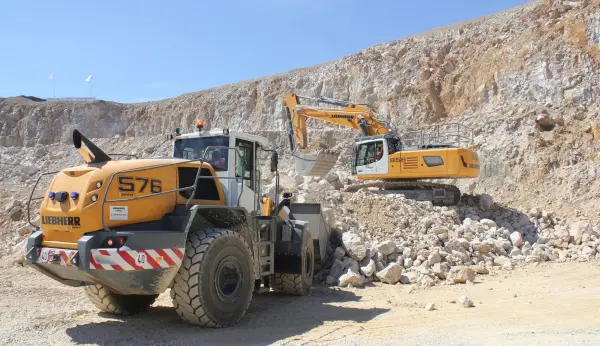More accurate picture of bitumen’s climate impact
Eurobitume’s long-awaited life cycle assessment update sets new standard for environmental data
THE bitumen industry has long relied on life-cycle assessments (LCAs) to quantify its environmental impact. But as infrastructure projects face tougher climate demands, those numbers need to hold up to scrutiny.
The new Eurobitume LCA 4.0 does just that – raising the bar with improved data quality, new assumptions, and more comprehensive coverage.
‘This update is really about credibility,’ said Nynas product health, safety and environment advisor Ida Dyrssen.
As a member of the Eurobitume task force that oversaw preparation of the newly published LCA update, Ms Dyrssen played a key role in what she describes as a much-needed upgrade in both data quality and industry transparency.
‘The old values were outdated and several shortcomings had been pointed out that resulted in decreased credibility,’ she said.
The main issue, she explained, was the choice of database reference data for crude oil that underestimated some of the impacts in the previous version. LCA 4.0, however, improves the quality of crude oil modelling, in particular when it comes to methane emissions assessments and updated geographic accuracy.
Another limitation, according to Ms Dyrssen, was a lack of primary data from refinery units and storage, as the previous LCA relied on literature and thermodynamic allocation rather than data taken directly from refineries.
As a result, the European bitumen industry’s flagship climate benchmark risked getting sidelined.
‘Some countries and companies started to use other reference values because they thought the Eurobitume LCA 3.1 global warming potential figure was not seen as credible any longer,’ explained Ms Dyrssen.
At the heart of the updated Eurobitume LCA lies a shift in how bitumen’s carbon footprint is calculated.
Approximately 70% of bitumen’s climate impact stems from oil extraction and refining. Thus, incorporating data taken directly from refineries rather than relying on databases had an outsized effect on the results.
Eurobitume’s LCA 4.0 reports a Global Warming Potential (GWP100) of 530kg CO2e per tonne for refined bitumen – more than double the previous value of 216kg. But the higher number is not due to increased emissions.
‘It’s about counting emissions more accurately, especially methane emissions from crude oil extraction, which were previously underestimated,’ said Ms Dyrssen.
To ensure the new dataset was representative, Eurobitume gathered data from 17 refineries across Europe, covering over 75% of its members’ bitumen production. Nynas contributed with data from all three of their bitumen-producing sites: Nynäshamn and Gothenburg in Sweden, as well as Eastham in the UK.
‘The taskforce worked very closely with the consultants, providing technical input on refinery processes and checking assumptions,’ said Ms Dyrssen. ‘As a taskforce, we had bi-weekly meetings over nearly a year. Everyone brought expertise, and everyone contributed.’
Her involvement reflects both her role at Nynas and her growing expertise in LCA methodology. ‘My job is to assess the environmental impact of our products,’ she explained. ‘But it’s also about ensuring the values we communicate are scientifically robust and fair.’
The updated LCA includes both the life cycle inventory (LCI) and life cycle impact assessment (LCIA), covering all emissions from crude oil extraction to bitumen storage at the refinery.
Ms Dyrssen hopes future work will expand this scope. ‘The next step is to include the use phase and end of life,’ she said.
‘We’d love to model the full life cycle of a road, from paving to decades of use, but that task is very complex, where much of the data lies with customers and road authorities. It’s a long-term goal.’
For Ms Dyrssen, LCAs are more than just compliance tools – they are strategic instruments. At Nynas, the insights from LCAs help identify impact hotspots and guide sustainability efforts. Ultimately, she views LCA 4.0 as a milestone for both the industry and sustainability.
‘Now, when I present the new values, I feel confident that they better reflect reality and are based on good data, but there is always room for improvement,’ she said. ‘Maintaining high data quality is essential, and it will be continuously updated with improved values, which may lead to both increased and decreased impacts over time.’










